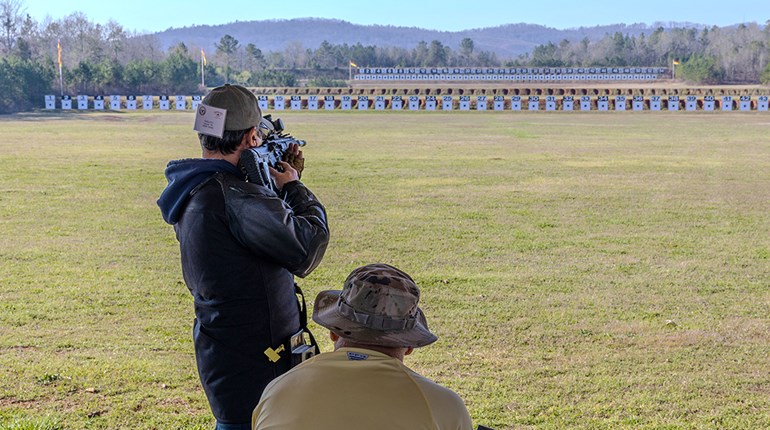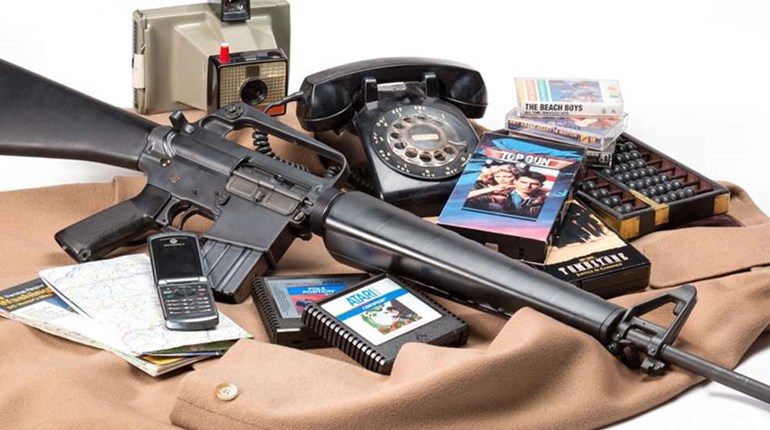
Every once in a while, I run Into something that just makes me cringe, and that’s the person who says, “Well, I just bought a gun and a box of bullets, so I’m good to go—after I figure out how to load this thing.” Whether he or she knows it or not, that person sure is depending on having a lot of good luck when facing bad guys. They may not know that owning a gun doesn’t make them an automatic winner. Developing useful defensive skills is something that we all have to work at, and there are three major areas that require our continual attention.
The first of these is marksmanship, the ability to hit a target. Now, I’m not talking about that once-in-a-while lucky shot that all of us have made at one time or another. I’m talking about the ability to hit what we are shooting at on a regular basis, on demand. It requires the combination of correct sight picture, breath control and trigger press. And, in a defensive situation all of that has to be done in an almighty hurry.
Another thing to remember is that shooting, like all hand-eye coordination movements, is a quickly diminishing skill. If we don’t practice it, we lose it. Under the pressure created by a violent threat, we will most likely not perform as well as we did in practice. What that means is, if we are hitting exactly right 90 percent of the time in practice, we may only do the same in an actual gunfight about 50 to 60 percent of the time. Even a person who is really serious about regular practice can be expected to drop about 10 percent.
The second critical skill to work on is gun handling, which covers a number of abilities, not the least of which is gun safety. Those of us who are your neighbors have the right to demand that you do so. If lightning strikes your handgun in such a way as to make it go off, that is an accident; just about everything else is a negligent discharge. And there is never a good excuse for a negligent discharge.
Gun handling also involves developing the skill to make a smooth, fast pistol presentation—one without any wasted motion. Once the fight starts, that holstered gun isn’t doing anyone any good. When we work for smoothness and lack of wasted motion, speed will eventually come.
Regardless of what kind of gun the armed citizen chooses, he or she should know what the potential malfunctions are and how to deal with them. Different types of guns are subject to different problems.
A failure to feed is different from a double feed, and both are different from a revolver that has a cylinder frozen in place. A person should not only know what to expect and how to correct it, but he or she should also know how to properly maintain their chosen gun(s) so as to minimize the chance of a malfunction.
Another aspect of gun handling is the ability to reload quickly. Although the need to reload rarely occurs in citizen-involved shootings, one would not want to be the exception to the rule. And, it is not just a matter of reloading the gun, but to do it quickly and smoothly while keeping an eye on what is going on. Good training and lots of practice are the keys to developing good gun-handling skills.
The third area of critical defensive skills is making yourself a harder target. It is important to know what is going on around you. None of us are as aware as we should be or could be. If we see the threat way over there, we have a lot of options as to how we will deal with it, including just getting away. On the other hand, if we look up and the threat is right in our face, our options have diminished considerably. Some people look but don’t actually see, and that can cause some really serious problems.
It is also important to educate one’s self about criminals and what they actually do. What actually happens during a home invasion, carjacking or armed robbery? What are the telltale signs we should be looking for? It might be a good idea to start using the NRA’s Armed Citizen column (on page 10 of this issue) as a study guide.
Personal defense is a lifestyle, not a hobby. On-the-job training is not a good way to deal with a criminal attack. When we continually work to improve our ability to truly defend ourselves we can better control the stress that comes from a violent criminal attack and have a better idea of how to deal with it. Working on these three skills—what Jeff Cooper called the Combat Triad—is the path to success and safety.




































